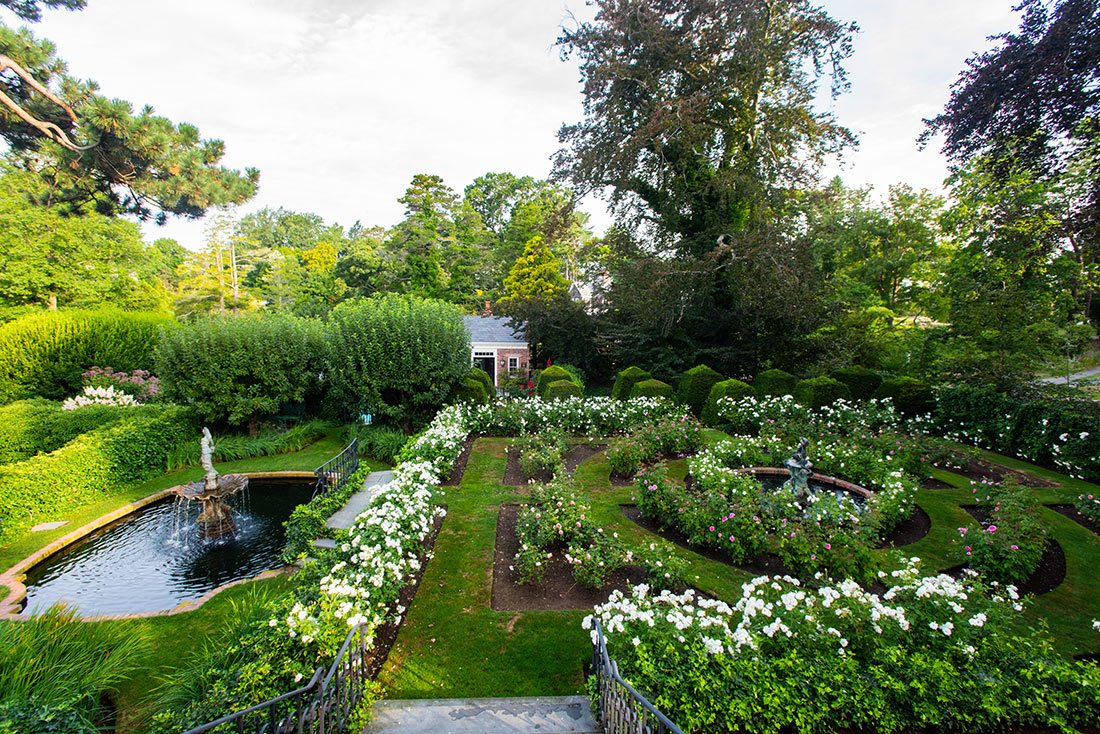Brian McCarthy wanted to purchase the entire seven-and-a-half-acre Crowninshield estate. However, only two acres were up for sale in 1996 when a friend alerted him that the Marblehead property was on the market. Twenty-five years later, many would say that Brian and Nancy McCarthy purchased the best two acres of the parcel because Louise du Pont Crowninshield’s rose garden lay buried and nearly forgotten on their section of the estate. And everyone agrees it was lucky land because Brian McCarthy launched a full and faithful restoration of the garden with sensitive insight and all the fixings for his forever home.
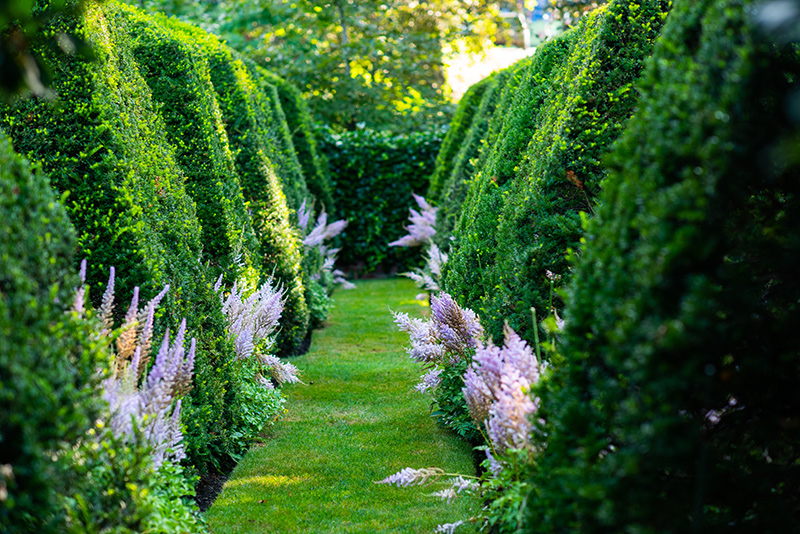
Seaside Farm, as it is called, was the former summer getaway for the Crowninshields at Marblehead, where yachtsman Francis (Frank) Boardman Crowninshield sailed in the summer. Not just any household, this was a veritable American version of Upstairs Downstairs, complete with butlers, chauffeurs, and several gardeners. Those gardeners definitely did not stand idle. Frank’s wife, Louise du Pont Crowninshield, was a staunch preservationist and founder of the National Trust for Historic Preservation, but she also had gardening in her bloodline, having grown up wandering Winterthur, her father’s naturalistically planted estate near Wilmington, Delaware.
The rose garden she created at her Marblehead summer home in the early 1900s was every inch the sumptuous spectacle you might expect of a family who loved the land and commanded the resources to make a thoroughly tasteful display happen. Her style was more formal than her father’s, summer was when she needed her garden to shine, and roses were her passion. She went straight over the top designing a luscious, rose-filled garden.
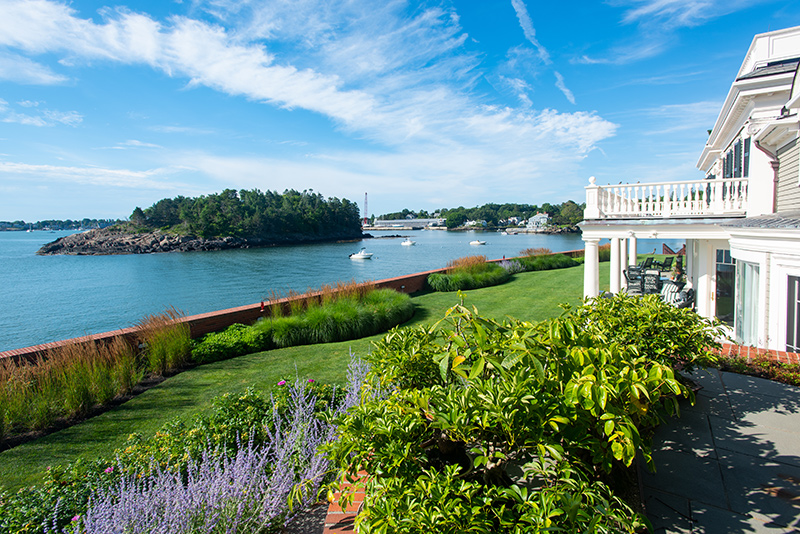
Unfortunately, no vestige remained of her vision when the two-acre lot became the McCarthys’ domain. Between Louise Crowninshield’s death in 1958 and 1996, the original estate was subdivided and “absolutely nothing was left of the garden,” McCarthy asserts of his two-acre lot. “No remnant, flower, or wall still existed.” He made it his mission to reclaim the scene in all its splendor.
A house also no longer stood on the two acres that the McCarthys bought. As a result, for the first few years of ownership, they were immersed in building a quintessential Georgian home with a slate roof, thirteen dormers, and numerous columns, plus a commanding view of Doliber Cove at Peach’s Point. When that house was completed, McCarthy was able to turn his full attention to the garden.
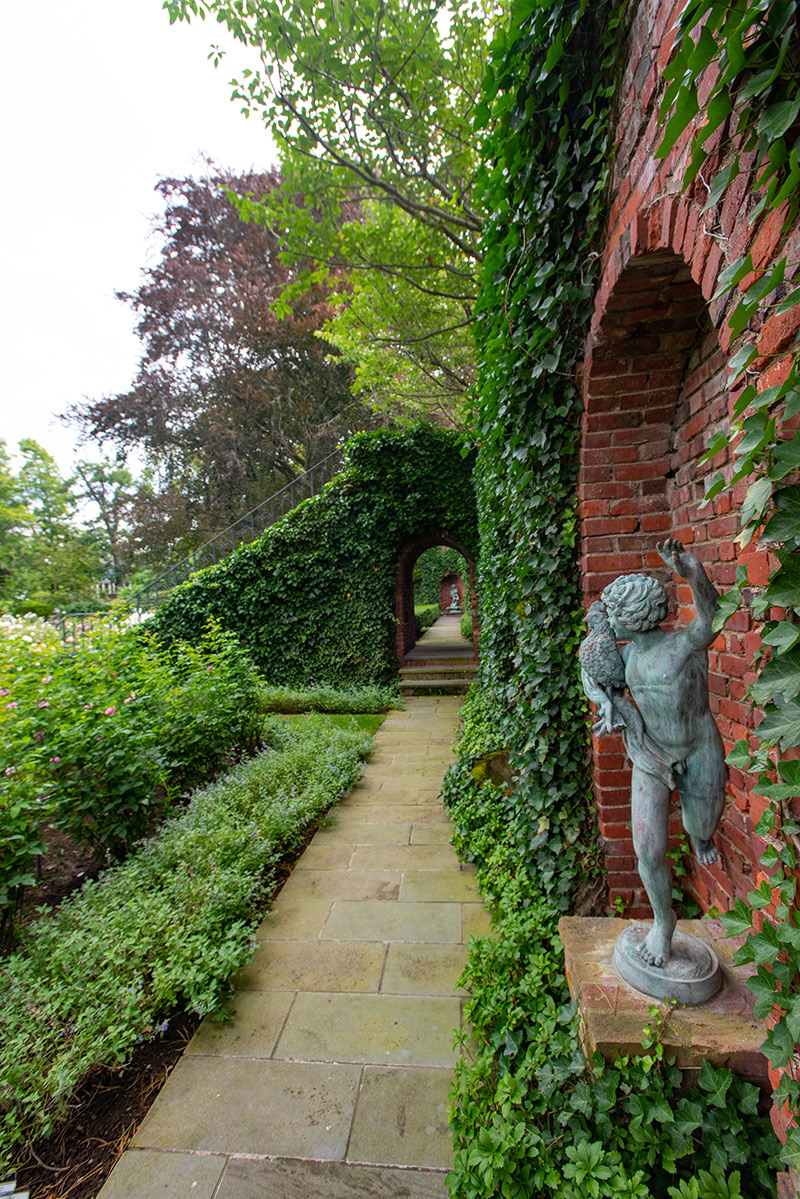
Fortunately, photographs existed. Further, McCarthy found a gardener who once worked on the estate and recalled the exact roses and perennials previously planted. “He described the roses, catmint, boxwood hedges, and perennials around the pool,” McCarthy recalls. “It was a great history lesson for us.”
With the help of Doug Jones of Boston’s LeBlanc Jones Landscape Architects, the restoration began in 1999. What followed was several years of intense work as many feet of brick walls were recreated to look as if they were original. Meanwhile, McCarthy frequented auctions to find appropriate sculpture to fill the niches in the wall. Boxwood hedges were planted and clipped into parterres. Hundred-year-old wisteria trees were found and installed to give instant age. Treasures were unearthed.
In the process of restoration, a 60 by 30 foot swimming pool was discovered buried beneath some giant locust trees and a few feet of soil. “It was built around 1910-1915 and as a testimony to the original craftsmanship, there was not one crack in that pool,” McCarthy marvels. A koi pond was also installed, and both pool and pond were given a state-of-the-art UV light filtration system. Cast iron gates were replicated and a greenhouse was added to protect McCarthy’s collection of venerable half-century-old jade plants.
Most importantly, the garden blossomed again. From the ivies that climb the walls and burst into bloom to the perennials that bristle in the parterre beds, Seaside Farm speaks its appreciation in petals. Roses blossom and rebloom throughout the summer to send their redolence floating in the breezes. The garden breathes and has breadth.
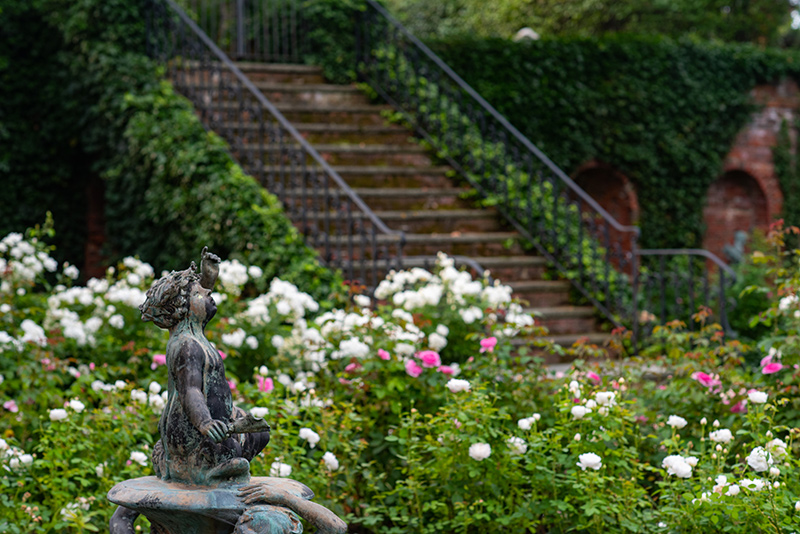
And the past lives. Throughout this process, existing elements were preserved. Care was taken to steer clear of a 175-year-old purple beech tree, one of the largest in the country. The soil was amended and compost was added. With 1,100 feet of ocean frontage, sea walls were restored and storm-proof plantings were installed along the water.
Blocks of ornamental grasses, Russian sage, sedums, and Montauk daisies were put in for an entirely different spin from the formal garden. Those plantings dance in the sea gusts, framing the view out to Brown’s Island (now Crowninshield Island), donated to the Trustees of Reservations by Mrs. Crowninshield. “I sing her praises every single day of the year,” declares McCarthy. For one shining garden in Marblehead, the tradition of stewardship and horticultural excellence remains alive and well. “We care about leaving a legacy,” McCarthy explains.
This summer, Seaside Farm plans to be open on Sunday, July 25, through the Garden Conservancy’s Open Days Program. Go to gardenconservancy.com for details; preregistration will be required.

